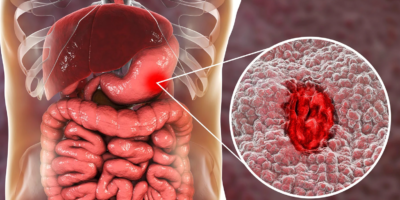More than half of young women’s monthly periods come with pain. Doctors aren’t exactly sure what causes cramps. A prominent theory is that the pain has to do with rising levels of inflammatory chemicals in the uterus. These chemicals cause the uterus to contract and the local blood vessels to constrict, thus diminishing blood flow. These chemicals tend to rise in all women during the latter half of the cycle. The good news is that monthly cramps usually diminish with age. That’s cold comfort if you’re doubled over in pain now. But there are some therapies and recipes for relief. Natural therapies can help reduce cramps but work best if started before the pain begins or right at the start of mild symptoms. Once the pain becomes severe, it’s often better to take an over-the-counter or prescription pain reliever.


1. Warm Monthly Relief
How it works: Heat increases blood flow and relaxes muscles (and the uterus is mainly made of smooth muscle). One of the theoretic problems with cramps is vasoconstriction (constricted arteries). Increased circulation might also help flush out inflammatory chemicals. Years of tradition and, now, scientific papers do show that heat works and can be as effective as over-the-counter pain relievers. Epsom salts are magnesium sulfate, and magnesium helps muscles relax. Peppermint relaxes intestinal smooth muscle. Scientists have yet to examine its effects on uterine muscle.
- PREPARATION:
- 2 cups (480 g) Epsom salts
- 5 to 10 drops peppermint essential oil
- DIRECTIONS: As you run a warm bath, mix in the Epsom salts until they dissolve. Swish in peppermint drops. Soak.
- YIELD: 01 SOOTHING SOAK
2. Castor Oil Pack
How it works: Castor oil has been known to relax the uterine muscles involved in cramping. Lavender relaxes smooth muscles and mental tension. Peppermint relaxes smooth muscle and acts as an analgesic.
- PREPARATION:
- 2 cups (475 ml) hot water (or enough to fill a hot water bottle)
- ½ cup (120 ml) castor oil
- 2 to 3 drops lavender or peppermint essential oil
- DIRECTIONS: Heat the water to your desired temperature and pour it into a hot water bottle. In a large bowl, mix the castor oil and lavender or peppermint oil. Fold a piece of flannel or woolen cloth into two or three layers. Dip the folded cloth into the castor oil mixture. Lie down and apply the soaked cloth to your abdomen. Cover with a sheet of plastic wrap or a plastic bag laid flat. Place the hot water bottle on top of the plastic. Lay the large towel over the hot water bottle and tuck it under each side of your body to hold in warmth. Keep the pack in place for at least 30 minutes. Repeat daily, as long as cramps persist.
- YIELD: 01 APPLICATION
3. Sweet Spice Tea
How it works: One study found that when women with a history of menstrual cramps took a special, concentrated extract of saffron, celery seeds, and aniseeds three times a day, their severe discomfort diminished in intensity and duration. Peppermint is included in this recipe for its muscle-relaxing qualities.
- PREPARATION:
- 2 cups (475 ml) water
- 2 teaspoons (4 g) aniseeds
- 1 teaspoon (2 g) celery seeds
- 1 tablespoon (2 g) dried peppermint leaves
- ¼ teaspoon saffron
- Honey or stevia (optional)
- DIRECTIONS: Boil the water. Place the aniseeds, celery seeds, peppermint, and saffron in a teapot or bowl. Pour in the boiling water. Let steep for 15 to 20 minutes. Strain. Sweeten to taste, if desired.
- YIELD: 02 SERVINGS
4. Tea for Ginger Tummies
How it works: Ginger reduces pain and inflammation. One study found that a special ginger extract taken four times a day eased pain as effectively as ibuprofen.
- PREPARATION:
- 2 cups (475 ml) water
- 2 teaspoons (5 g) grated fresh ginger
- 1 tablespoon (20 g) honey
- DIRECTIONS: Boil the water. Place the ginger in a teapot. Add the boiling water and allow the ginger to steep for 15 minutes. Stir in the honey. Sip.
- YIELD: 01 SERVING
5. Omega Time
How it works: Salmon is rich in omega-3s. These anti-inflammatory fatty acids counter the small chemicals that cause uterine cramps. An Italian study found that young women who consumed more fish, fruit, and eggs (and less wine) were less likely to have cramps. Ginger and curry powder has anti-inflammatory properties.
- PREPARATION:
- 1 tablespoon (15 ml) olive oil
- ¼ teaspoon dried ginger or 1 teaspoon (3 g) grated fresh
- 2 salmon steaks
- Salt and freshly ground black pepper
- Pinch of curry powder
- Lemon slices, for garnish
- DIRECTIONS:
Mix the olive oil and ginger.
Set the oven to broil, and place the fish on a broiler pan. Mix the olive oil and ginger. Baste the salmon on both sides with the oil mixture. Season with salt and pepper on both sides.
Broil until the fish is opaque, 4 to 5 minutes for each side. Add a final pinch of pepper and the curry powder. Garnish with lemon slices.
- YIELD: 02 SERVINGS
6. Olive-Topia Tapenade
How it works: Black olives are rich in vitamin E. Two studies have shown diminution of menstrual pain with supplements containing 400 to 500 IU of the vitamin a day.
- PREPARATION:
- ¼ cup (25 g) pitted black olives, chopped finely
- 1½ teaspoons (5 g) minced fresh garlic
- Olive oil
- Pinch of sea salt
- A small loaf of crusty French bread
- DIRECTIONS:
Preheat the oven to 350°F (180°C, or gas mark 4).
Combine the chopped olives and garlic in a small bowl and mix fully. Drizzle with enough olive oil to bind the mixture. Stir in a pinch of sea salt. Cut the bread in 1-inch (2.5 cm) slices. Spread with the tapenade and briefly heat in the oven until just warm. Savor!
- YIELD: 04 SERVINGS
7. Decramping Almond Spread
How it works: Almonds, cashews, and other nuts are high in magnesium as well as other nutrients, including vitamin E and omega 3s. Three studies show that magnesium supplements reduced menstrual pain.
- PREPARATION: 2 cups (290 g) raw almonds
- DIRECTIONS:
Preheat the oven to 300°F (150°C, or gas mark 2).
Spread the nuts on a dry baking sheet. Roast in the oven for 30 minutes. Let cool fully. In a food processor, grind the nuts on the top setting until they are of granular consistency. Scrape the sides of the processor bowl. Grind the nuts again, for about 2 minutes, until the nut oils release. The spread is ready when the nut oils have turned the powder to a creamy consistency. Put the spread into an airtight glass jar and keep refrigerated. It will last for about three weeks.
- YIELD: 08 SERVINGS
8. Quick and Soothing Breakfast
How it works: One study showed that college students who consumed more dairy products had a reduced chance of having cramps. And eating yogurt has many other health benefits, including maintaining bone strength and optimizing your immune system. The vitamin E in almonds and apricots supports the dairy’s soothing qualities.
- PREPARATION:
- ¼ cup (20 g) instant oats
- ¼ cup (60 g) Greek yogurt
- ¹∕3 cups (80 ml) water
- Stevia or honey
- Handful of almonds and/or apricots
- DIRECTIONS:
Mix the oats, yogurt, and water together in a microwave-safe bowl.
Microwave on high for about 1 minute. Stir and then heat for an additional minute or until it reaches a good consistency. Stir in sweetener, as needed. Top with almonds or apricots.
- YIELD: 01 SERVING
Lifestyle Tip
- Beat the cramps with direct heat: try placing a hot water bottle or a heating pad on your abdomen for quick relief. place a towel or clean cloth between the heat source and your skin to keep from burning.
- Nuts, especially Brazil nuts and almonds, are a great vitamin e delivery vehicle. Mix them up for a quick and healthy snack or sprinkle them over your lunchtime salad.
- Generally improving your health can go a long way to relieving cramps. Research supports the following practices:
- Give up cigarettes and stay away from other people’s smoke; smoke inhalers have more severe monthly cramps.
- Drink only in moderation and reduce your alcohol intake or abstain during the days before your period.
- Maintain a healthy weight (being overweight or underweight increases the odds of painful periods).
- Exercise regularly.
- Manage stress and try to stay calm despite discomfort. Biofeedback and working with a therapist can help.
- Don’t skip meals. Studies indicate that teens who skip meals or diet are more likely to develop monthly cramping when their periods begin.
- Reduce your intake of high-fat dairy, meat, pork, and poultry. meanwhile, increase intake of fruits, vegetables, whole grains, and fish.
- Practice good posture and avoid constricting clothing.
- Stay regular. Constipation can aggravate pelvic discomfort.






Leave a Reply